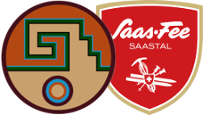Speaker
Description
Nowadays, any physicist performing an analysis of the LHC data, needs to be well-versed in programming, at the level of both a system programmer and a software developer to handle the vast amounts of collision and simulation events. Even the simplest programming mistake in any of these areas can create big confusions on the analysis results. Moreover, a multitude of different analysis frameworks for similar tasks makes it difficult to communicate within the same experiment and preserve the analysis algorithms for inter-experimental discussions. The steep learning curve related to these analysis frameworks also erects a barrier between the data and the physicist who may simply wish to try out an analysis idea.
The abundance of inexpensive, powerful, easy to use computing power leads to a fundamental shift in data analysis. The development of a full-fledged text-based analysis algorithm description language that would eventually evolve into an AI-based analysis tool with which scientists can easily communicate in their own languages depends on this computing power. Such a language incorporating also logic and mathematical expressions, would eliminate all kinds of programming difficulties and errors, consequently allowing the scientist to focus on the goal, but not on the tool.
This presentation discusses the guiding principles of such an analysis description language and gives as an example the cut based analysis language and a runtime interpreter, CutLang. A number of LHC analyses of various complexities will also be shown to illustrate the advantages of a human readable analysis description language.
